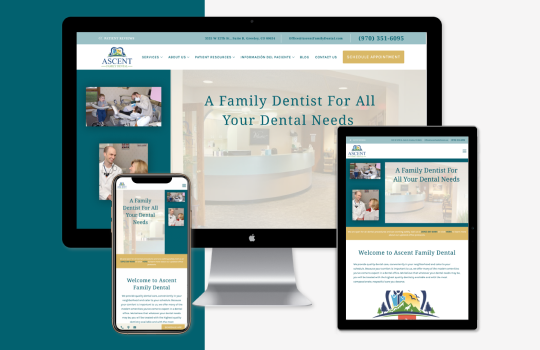
Proven strategies for attracting and retaining more patients
With the right strategies and tools, your cardiology practice can experience significant growth. It’s possible to attract new patients, retain existing patients, streamline operational efficiencies, and increase revenue year after year — even amidst growing competition. But doing so requires a comprehensive marketing and advertising strategy. You want a plan that helps prospective patients find you, influences visitors to choose your cardiology practice over other local providers, and encourages patients to stay with your practice for the long haul. Explore more ways for your cardiology practice to achieve its goals for growth, patient satisfaction, and operational efficiency.
Each Specialty is Unique!
Contact our team today to find the best marketing strategy for your specific business’s needs.
Schedule a free consultation
Attracting new cardiology patients in a digital world
Because the average age of cardiology patients tends to skew older than other medical specialties, many cardiologists have been slow to adopt today’s digital marketing strategies with the misconception that seniors aren't spending their time online. Yet, according to Pew Research, 93 percent of U.S. adults use the internet regularly1. In addition, 69 percent of adults between ages 50-64 and 40 percent of those above the age of 65 use social media, with Facebook and YouTube highlighted as the most popular platforms in these age groups2.
It’s also important to consider that cardiology patients may have younger family members making medical decisions and coordinating care on their behalf. These consumers also spend hours each day working, interacting and conducting business transactions in an online world. Since it’s clear that Americans across all ages are frequent internet users, cardiology practices need a sound digital marketing strategy to connect with patients of all ages.
Digital marketing can not only expand the reach of your cardiology practice, it can help streamline your marketing strategy and enhance your return on investment. Here are a few of the many benefits of implementing a strong digital marketing and advertising strategy.
Factors that drive new cardiology patient acquisition
A new diagnosis or sudden cardiovascular event that requires a patient to establish a relationship with a cardiologist can
be a very overwhelming time. Today’s discerning patients (and their loved ones) take the decision very seriously, seeking
input from numerous sources before choosing the cardiologist that’s right for them. Varying factors help cardiology
practices attract new patients, including web presence and online reputation. When making this significant decision,
here are a few top sources your prospective patients are likely to turn to while evaluating a new cardiology practice.
Next Section......
Because the average age of cardiology patients tends to skew older than other medical specialties, many cardiologists have been slow to adopt today’s digital marketing strategies with the misconception that seniors aren't spending their time online. Yet, according to Pew Research, 93 percent of U.S. adults use the internet regularly1. In addition, 69 percent of adults between ages 50-64 and 40 percent of those above the age of 65 use social media, with Facebook and YouTube highlighted as the most popular platforms in these age groups2.
It’s also important to consider that cardiology patients may have younger family members making medical decisions and coordinating care on their behalf. These consumers also spend hours each day working, interacting and conducting business transactions in an online world. Since it’s clear that Americans across all ages are frequent internet users, cardiology practices need a sound digital marketing strategy to connect with patients of all ages.
Digital marketing can not only expand the reach of your cardiology practice, it can help streamline your marketing strategy and enhance your return on investment. Here are a few of the many benefits of implementing a strong digital marketing and advertising strategy.





